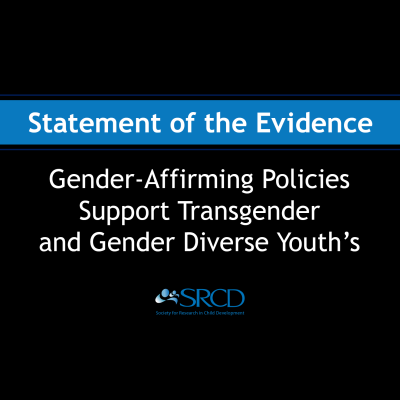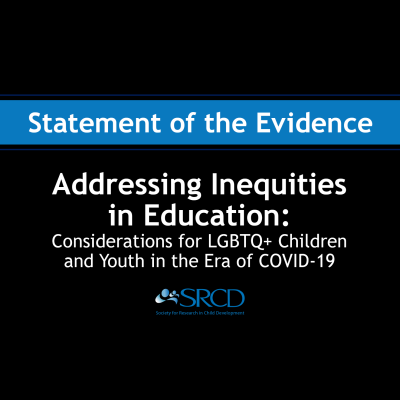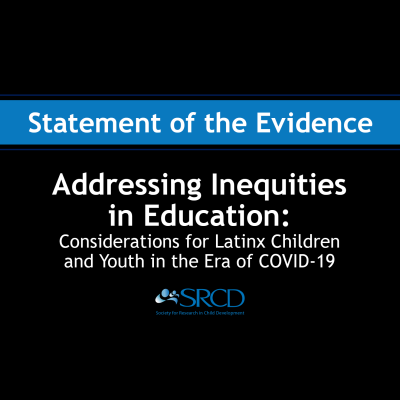Young Hispanic Children: Boosting Opportunities for Learning
Social Policy Report Brief, Volume 23, Issue 2
Why Does This Matter?
Young Hispanic children, the largest and fastest-growing racial-ethnic group in the United States, are a demographic group needing urgent attention. As a group, Hispanic youths trail Whites and Asian Americans at all proficiency levels of reading and math from pre-kindergarten to 12th grade.
Investing in dual-language instead of English-only programs and encouraging pre-kindergarten attendance can improve learning opportunities for Hispanic children and increase their chances of success.
Policy Implications
Policymakers should expand and improve educational opportunities for 3- to 8-year-old Hispanics. Specifically:
The federal government should:
- Develop, evaluate, and expand programs to raise the number of preschool and early elementary teachers proficient in English and Spanish
- Develop, evaluate, and expand programs to recruit Spanish speakers trained to teach students a second language to work as classroom language specialists
- Expand dual-language programs through Head Start, Early Head Start, and other federal programs
- Expand national and international databases that assess students’ academic performance
State governments should:
- Collaborate with local communities to offer high-quality educational experiences at different times of the day and week to meet families’ scheduling needs
- Provide Hispanic 3- and 4-year-olds access to free, state-funded, high-quality preschool programs
- Give qualified preschool teachers pay and benefits equal to public school teachers
- Establish information systems for districts and state education departments to 1) learn more about students’ race/ ethnicity, parents’ education, family income, immigrant generation status, national origin, and primary language spoken at home, 2) monitor the academic progress of different groups of students, and 3) gauge policies’ and programs’ effectiveness over time
Local governments should:
- Collaborate with federal and state governments and Hispanic organizations to give parents information on prekindergarten, Head Start, and Early Head Start programs to boost Hispanic enrollments
What the Research Says
Available evidence on schooling, language development, and related policy issues for English language learners is limited—particularly when it comes to developing and testing classroom approaches that work for different children. But we do know that:
- Because most young Hispanic children come from homes in which Spanish is spoken, early educational programs should integrate language and culture clearly and deliberately.
- For young Hispanics to succeed in school, they also need strong English skills.
- Native Spanish- and English-speaking students who attend dual-language programs perform as well or better on academic achievement tests than their peers who attend English-only programs because these programs pay specific attention to language development instruction.
- Rich language environments, universal high-quality pre-kindergarten programs, and high-quality teachers can improve learning opportunities and outcomes for Hispanic children.
Facts at a Glance
- The Hispanic population in the United States is expected to reach 101 million by 2050, which will be one quarter of the nation’s population.
- In 2003, Hispanics comprised 21 percent of the total population of children under 5 years old, yet nearly 34 percent of young children living in poverty.
- Hispanic children in the United States are not a homogenous group; they come from diverse social, cultural, and linguistic backgrounds.
- Three in four Hispanic children live in homes in which at least some Spanish is spoken regularly. Nearly three-fourths of Hispanic children in immigrant families live with at least one parent who doesn’t speak English exclusively or very well, and half live with two parents who don’t have English skills.
- Young Hispanics are less likely to attend prekindergarten programs than children of other racial and ethnic groups.
This brief summarizes a longer Social Policy Report, "Early Educational Opportunities for Children of Hispanic Origins," by Eugene Garcia, Professor of Education at Arizona State University, and Bryant Jensen, a Ph.D. candidate in educational psychology at Arizona State University. After writing this report, Garcia served on the Education and Labor Team for the Obama-Biden transition.


